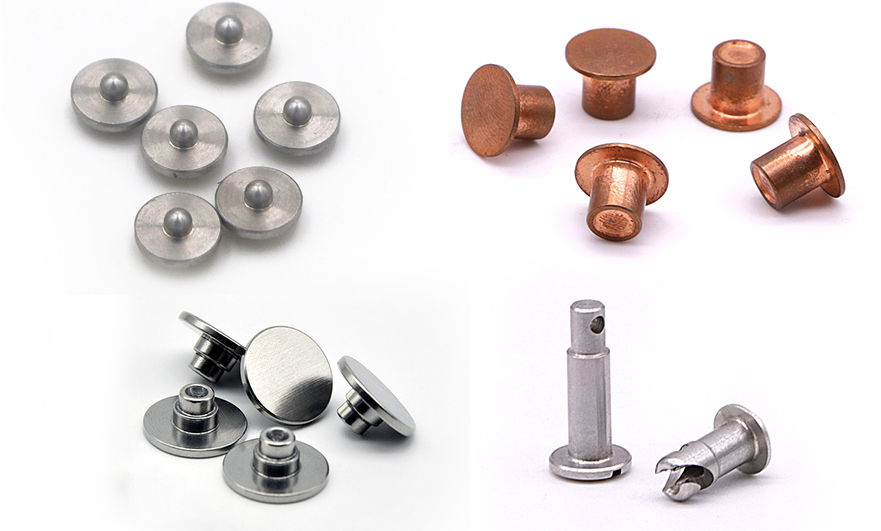15 years one-stop China custom CNC machining parts factory

Hey there I’m VMT Sam!
With 25 years of CNC machining experience we are committed to helping clients overcome 10000 complex part-processing challenges all to contribute to a better life through intelligent manufacturing. Contact us now
 230 |
Published by VMT at Oct 05 2021
230 |
Published by VMT at Oct 05 2021
Rivets are one of the most classic fasteners in mechanical applications. Their sturdiness and durability make them different from other fasteners, so they are very common in our lives.
What are rivets?
A rivet is a nail-shaped object used to connect two parts (or components) with a through hole and a cap at one end. In riveting, the riveted parts are connected by self-deformation or interference. Once the rivet is installed, it will not fall off unless it is intentionally destroyed. Rivets are also CNC machined parts which can be machined with aluminum, copper and more materials.

Types of rivets and their uses
1. The fan rivet is specially designed for manual installation. It can be pulled in through the hole of the panel or the bottom frame. It is made of elastomer material and has good toughness. The design is ingenious and has elastic function. It is not easy to slip after being pulled in with the corresponding aperture. The fan rivets are mainly used to fix the fan, heat sink and chip of the electronic computer case, and have anti-vibration and reduce noise.
2. The core rivet is a new type of riveting fastener that is very convenient for riveting. The core rivet can show its unique advantages in a relatively small space or in an environment where there is no rivet gun or the rivet gun cannot be used. Two or more connected parts can be riveted successfully by hitting the nail core on one side with a tool such as a hammer. Drive rivets can be divided into oblate head drive rivets and countersunk head drive rivets according to the shape of the cap brim.
3. Countersunk head and 1200 countersunk head rivets are mainly used for riveting occasions where the surface must be smooth and the load is not large;
4. Semi countersunk head and 1200 semi countersunk head rivets are mainly used for riveting occasions where the surface must be smooth and the load is not large.
5. Flat head rivets, used for riveting occasions with general load;
6. Flat head and oblate head rivets are mainly used for riveting occasions of metal sheets or non-metallic materials such as leather, canvas and wood;
7. Large flat head rivets, mainly used for riveting occasions of non-metallic materials;
8. Semi-hollow rivets are mainly used for riveting occasions with low load;
9. Headless rivets, mainly used for riveting occasions of non-metallic materials;
10. Hollow rivets, light weight, weak nail head, used for riveting occasions of non-metallic materials with low load;
11. Tubular rivets, used for riveting occasions of non-metallic materials that do not follow the load;
12. Sign rivets are mainly used for riveting nameplates on machines and equipment.
13. The types of pull rivets can be roughly divided into open type, closed type, double drum type and single drum type series.
Ready To Start Your Next Project?
Get Instant Quote

Request a Free Quote
Send us a message if you have any questions or request a quote. We will get back to you ASAP!